We've lost many life skills over the years. How to make butter, drive a team of horses, use a coffee maker that doesn't come with prepackaged pods ... but one of the most distressing things is NO one knows how to keep bread fresh anymore. Here's the how and why.
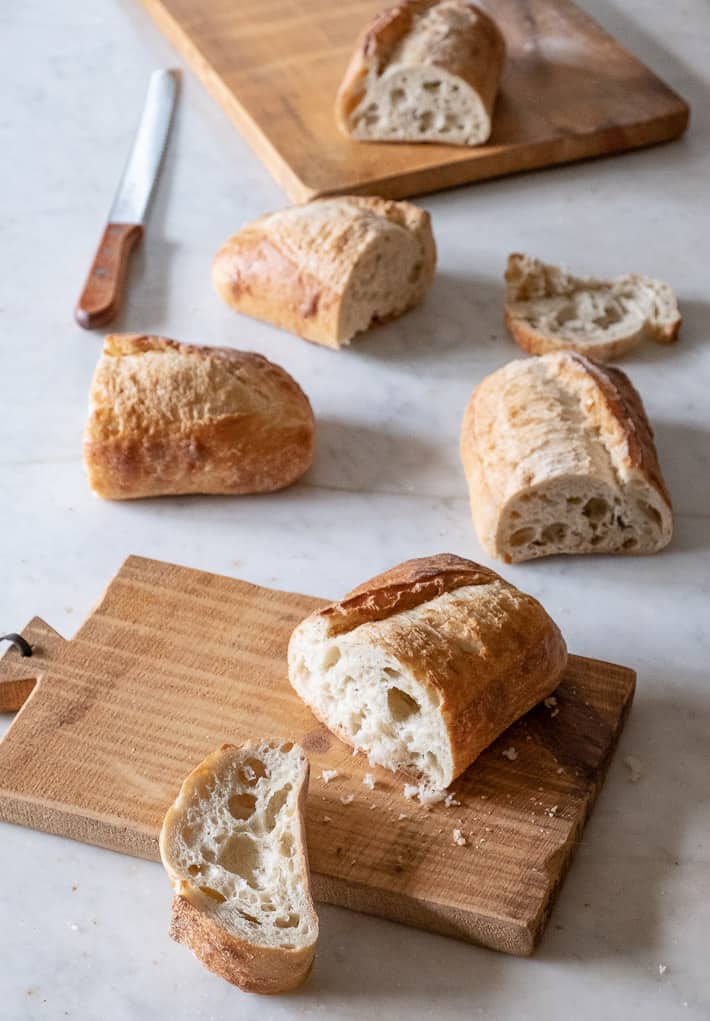
Jump right to the best bread storage method.
In the 1930s there was a very large blip in the bread eating world that we're just starting to recover from. Way back then, bread came like the bread you see in the photo; whole loaves of crusty, prone to get stale fast, bread.
It's the kind of bread most of us are eating now.
Table of Contents
In the 1930's
The "bread blip" when The Continental Baking Company started selling the greatest thing since the wheel - sliced bread.
Wonder Bread made it's nationwide debut throwing women into a panic over this newfangled sorcery. They all asked themselves ...
HOW could a loaf of bread that's already sliced stay fresh?
Turns out, it's completely possible as long as you remove all the nutrients and minerals and basically anything good from the flour by processing it until it's a mere shadow of its former self.
Highly processing flour creates a super-soft almost devoid of nutrient, marshmallow-like bread that lasts forever without drying out. Yay?
A decade or so after its introduction, the government forced the makers of Wonder Bread and other extremely processed foods to add nutrients and minerals back into the bread to give it at least some nutritional value.
This is why you'll see bread that says "enriched" on it. Enriched??!! That's great! It gives you the impression that there's even MORE nutrients in it the bread!!!
There aren't. They've just added in some synthetic nutrients to make up for the real ones they took out.
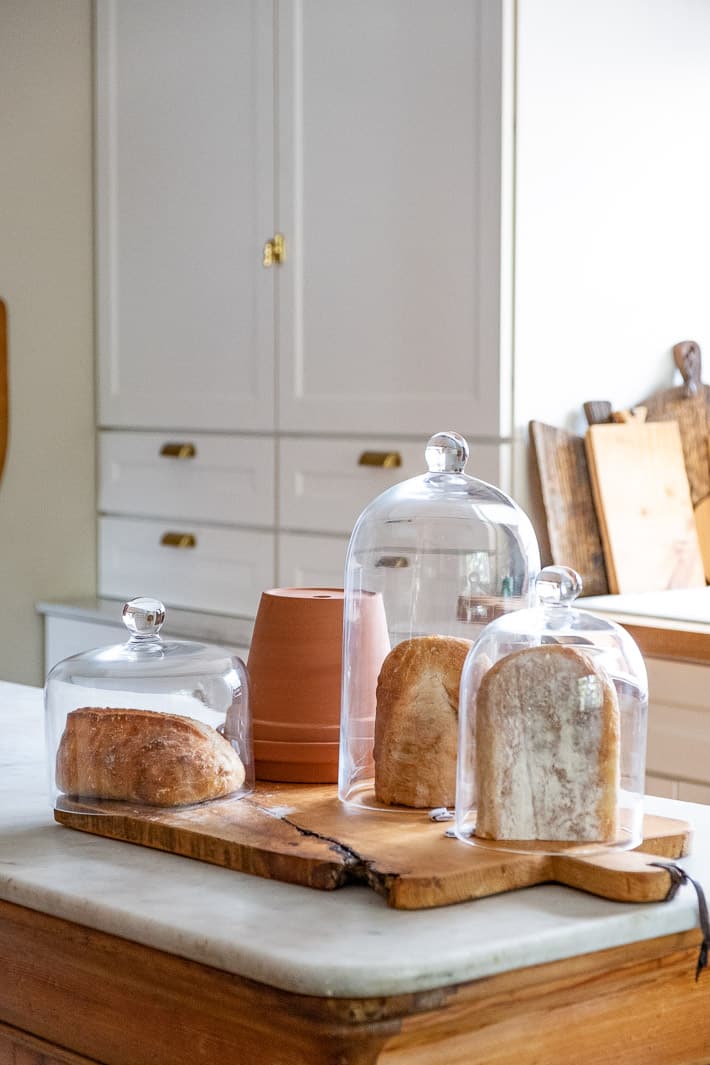
So there you have it.
That's why you don't know how to store real bread.
Sliced bread took over the world and ruined your bread storage life skill, turning you into an inept drooling moron.
You can blame Wonder Bread - the worst thing since sliced bread.
Everyone started buying it because it was soft and plush and lasted forever without going mouldy or stale. There was nothing to storing it.
You just left it in its plastic bag and it'd stay fresh in your kitchen for as long as a typical tax evasion jail sentence. But in the past 20 years or so (I have completely made that number up) we're getting back to eating - and I hate this phrase - real food. That means loaves of crusty, unsliced bread.
And not a single one of us knows how to properly store it to keep it fresh beyond one day.
NO ONE. Not even myself. So I did an experiment involving several loaves of bread and 8 different storage methods.
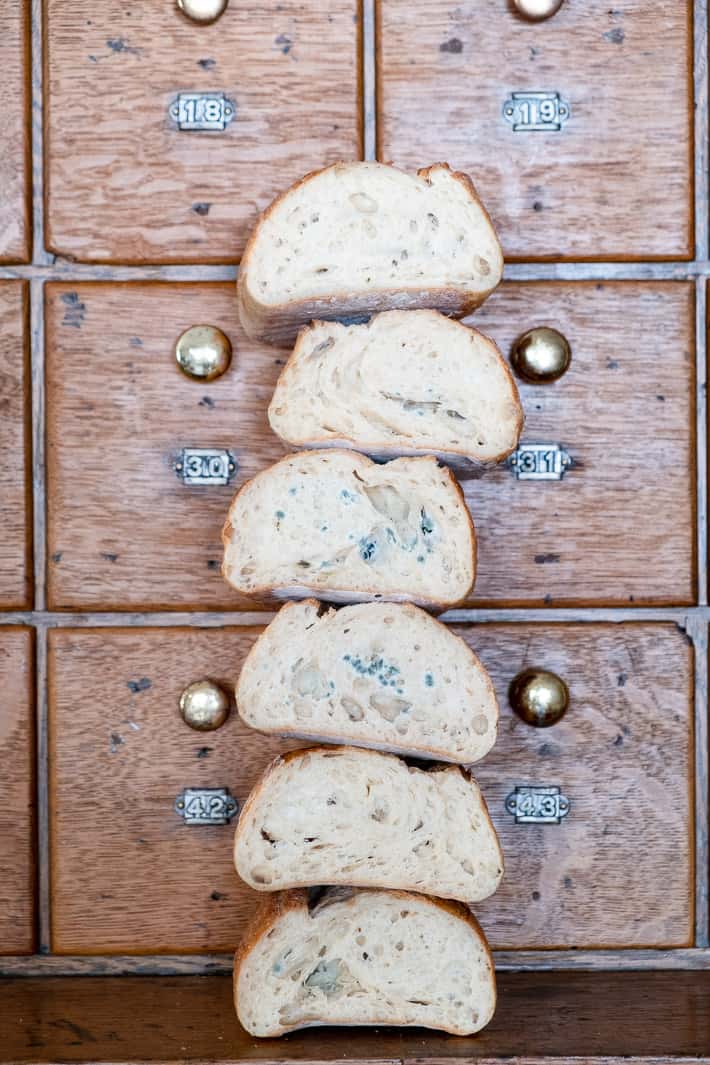
Bread Storage Test Methods.
- Under glass on a wood cutting board with no ventilation
- Under glass on a marble cutting board with no ventilation
- Unwrapped in a drawer.
- In a linen bread bag.
- In a clay pot.
- Under medium sized glass dome with ventilation - bread on its side.
- Under medium sized glass dome with ventilation - bread on its cut end.
- Under large glass dome.
Here's how the methods worked.
Each loaf was cut in half and stored in one of the 8 designated places. I measured their moisture with a moisture meter, but it turned out that wasn't really necessary. Mould meant the bread was too moist with not enough ventilation, hard as a rock meant too dry with too much ventilation.
1 & 2 Under Glass.
The bread under glass with no ventilation got mouldy within 3 days. It was stored with the cut end down to prevent moisture loss with probably also accounted for the quick mould production.
This method didn't work. The crust became soft almost immediately after going under the glass domes and mould formed within days.
Results - FAIL
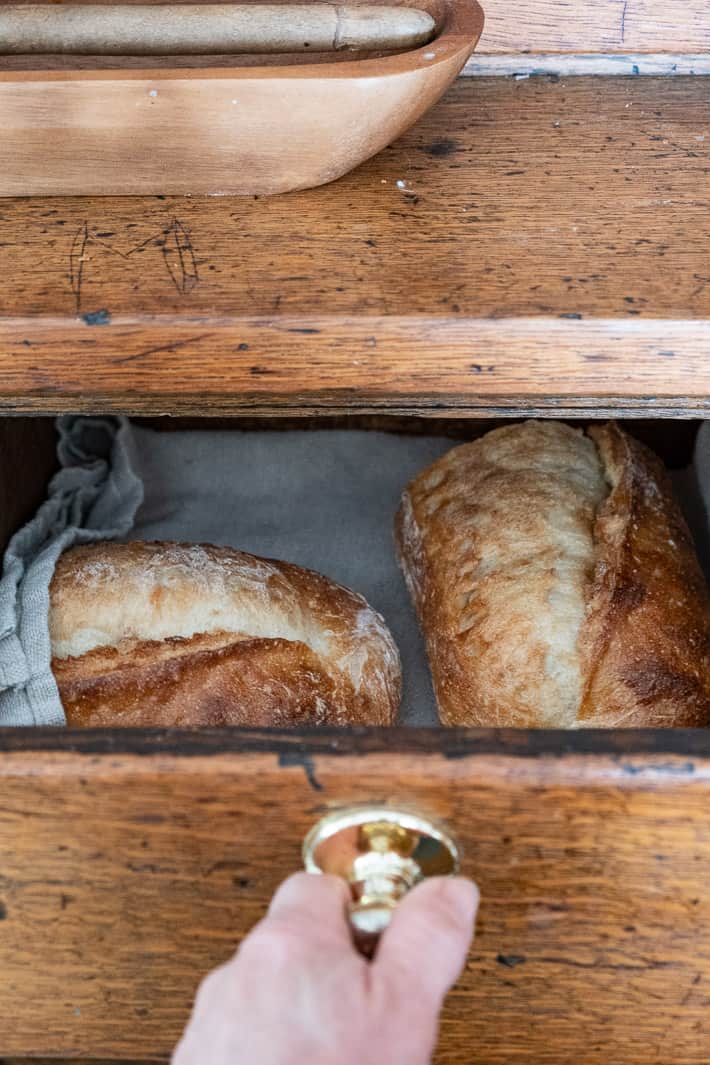
3. Unwrapped in a drawer
This was my attempt to replicate a bread box. I lined the drawer with a linen towel just in case there was any ick in the drawer. One loaf was placed with the cut end open to air, the other loaf had the cut end pushed against the side of the drawer.
This method worked surprisingly well, with the loaf that had the cut end pushed against the side of the drawer staying quite close to its original texture. Soft on the inside and crusty (not soft) crust.
Results - PRETTY DARN GOOD. But the drawer swelled up and the bread that didn't have the cut end covered up dried out.
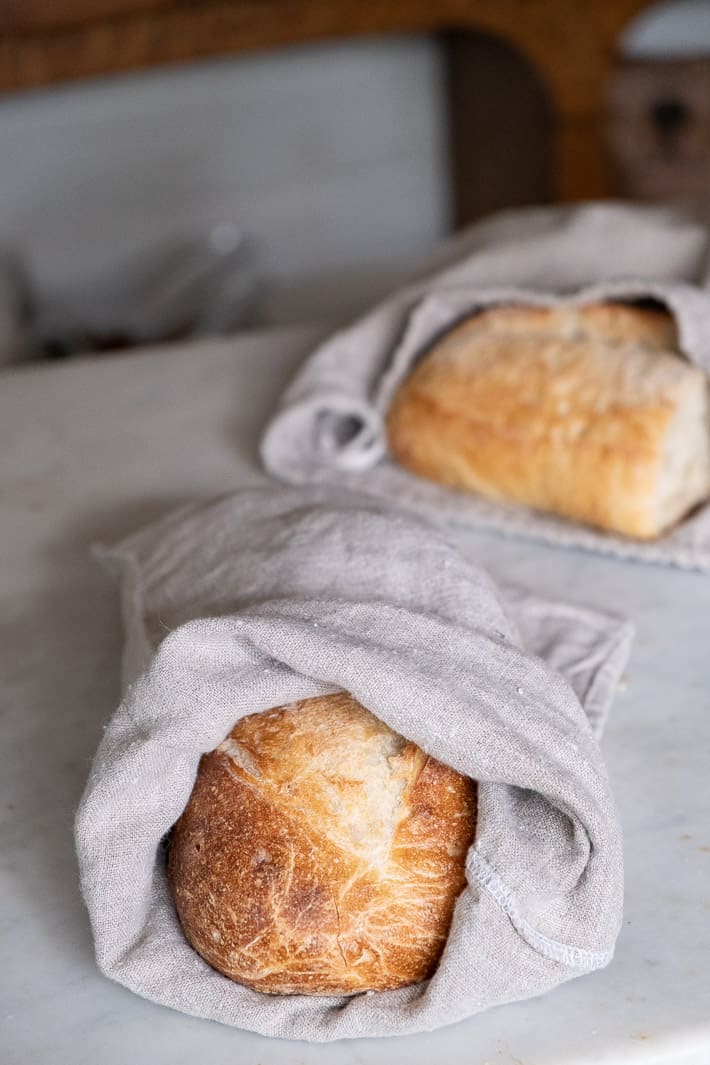
4. In a linen bread bag.
This method was the best for keeping a crusty loaf and preventing mould but only for a couple of days. Within one day the bread started to harden just beneath the crust and the hardness just got deeper and deeper into the loaf with each day it was stored until by day 4 the bread was hard enough to break if you dropped it.
Results - Good for very short term storage.
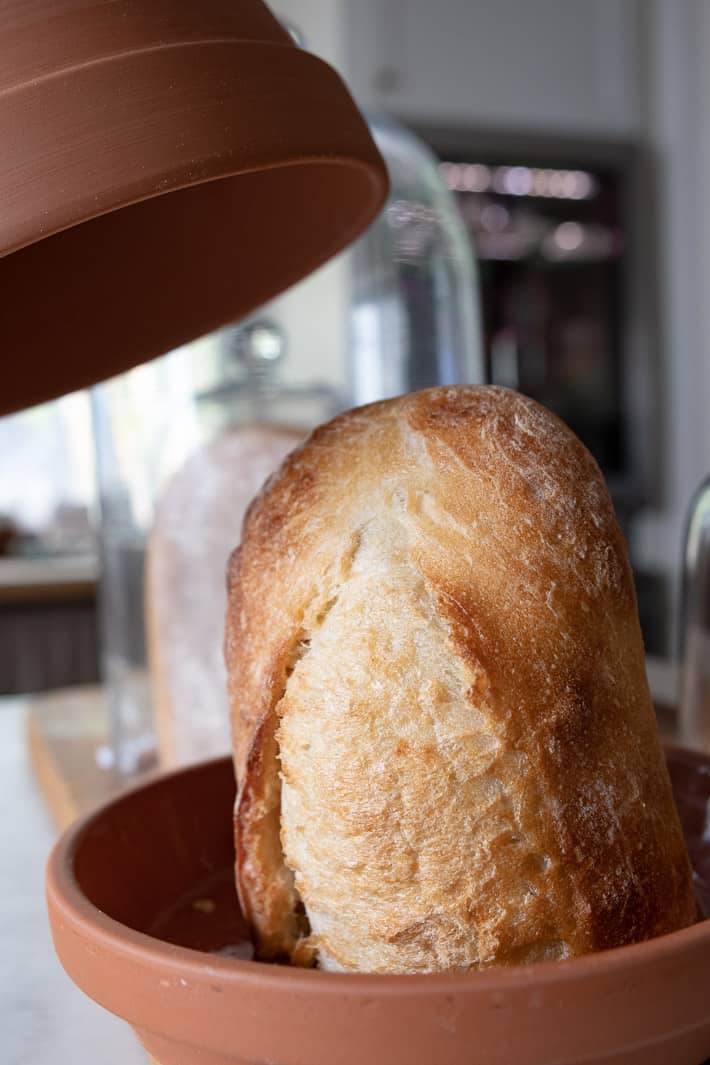
5. Clay pot.
I decided to try storing bread in a clay pot since seeing this clay bread box a few years ago. It made sense. The clay would absorb extra moisture and help prevent the bread from going hard and stale. The hole in the top of the pot I figured would act as ventilation and allow moisture to escape.
It didn't work. The bread got mould on its cut end within a few days.
Results - FAIL. My DIY clay bread holder didn't allow enough moisture to escape. The one for sale on Amazon might work better. I'm not sure.
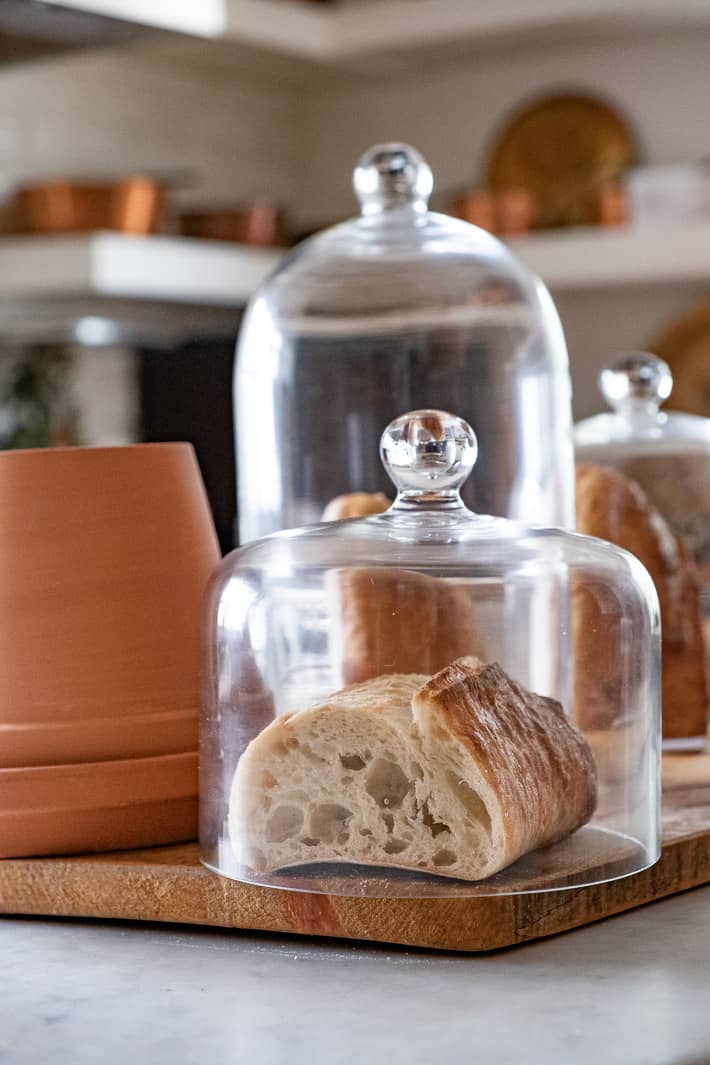
6. Under medium sized glass dome with ventilation - bread on its size. After seeing how quickly the bread went mouldy under glass domes with no ventilation I did two things. I added ventilation by just offsetting the glass dome so air could get underneath and storing the bread on its side so it could breath. I was worried it would dry out if I did this and it did dry out a little bit, but it not so much that that portion of bread wasn't edible. It just wasn't quite as soft as a fresh cut.
Results - Not bad, but not the winning combination either.
7. & 8. - Under glass domes (one large one smaller) with ventilation with the bread sitting on its cut edge.
Mould. Mould, mould, mould. I thought using a larger glass dome would maybe prevent the mould from forming so quickly but it didn't.
Results - FAIL.
Keep in mind with all of these methods, I wasn't cutting the bread daily exposing a new fresh end. This would help the bread stay fresher longer because you'd have a new cut end all the time which would prevent mould. If you were to use any of these methods while constantly cutting from the bread, they would stay fresh longer.
There was ONE method of storing the bread that worked much better than everything I tried. And here it is.
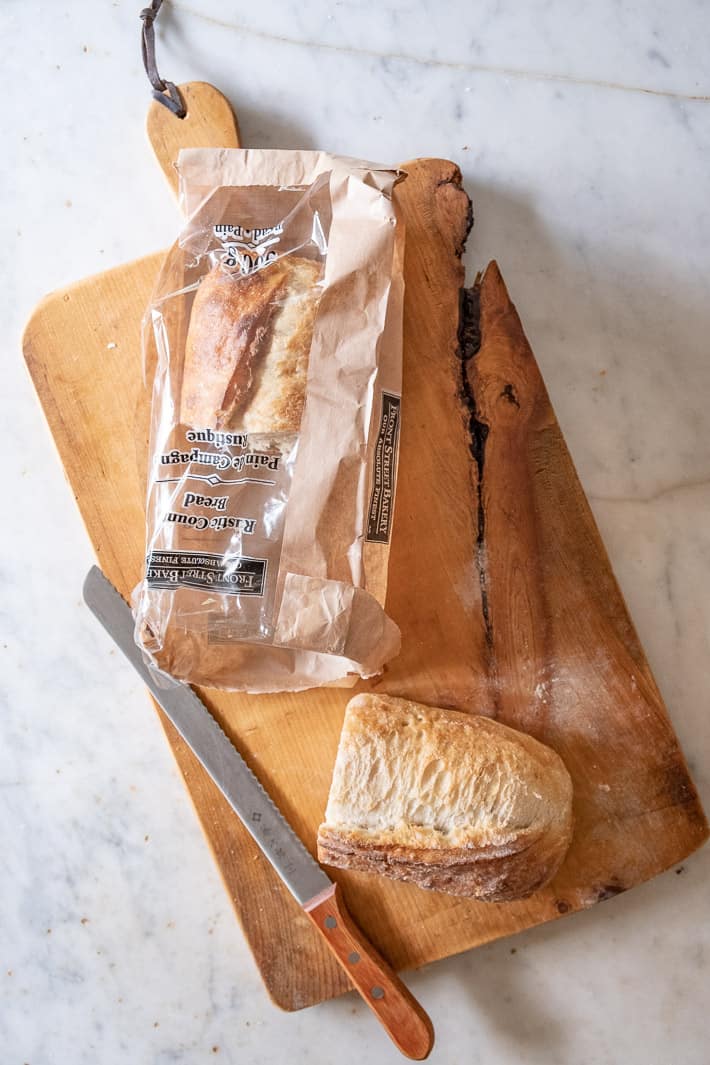
Yeah. Storing the bread in the bag it came from the bakery in. It was far and away the best method for storing the bread, lol. Another option along these lines is to store it in a paper bag at room temperature.
All of these methods are done using store bought bread but they apply to home baked bread as well.
Can you leave freshly baked bread out overnight?
When I bake bread I always leave it on the counter overnight. You definitely don't want to wrap it in something that it can't breath in (like a plastic bag) until it has completely cooled.
If you've already cut your bread make sure you store it with the cut side down on the counter to help stop the end from getting dry.
If you LIKE a soft crust then wrap the freshly baked bread in a tea towel.
If you LIKE a crispy crust just put it on the counter or on a cooling rack so the bottom has air circulating under it.
The other way to go is storing your bread in a little antique contraption called a bread box. They have proper ventilation and are literally made for storing bread. They used to be popular back in the olden days but they're making a comeback. Why is this relic making its way back into kitchens?
You might say that bread boxes are the greatest thing since before sliced bread.
I've already been browsing and I really like this sleek white metal one but of course I'll have to do some research and testing before I commit $29.99 and more importantly counter space to one.
What is the best way to keep bread fresh longer?
Storing bread in the freezer is the best way to keep it fresh long term. Avoid putting bread in the fridge though because the slow cooling does something to the starches which makes it stale quickly. If you plan on toasting it, that doesn't matter though.
The Conclusion
There are two major things that happen when you store bread. It either dries out, or it gets mouldy.
The best way to store it is in a paper bag or the bag your fresh bread came in (as long as it's a bakery bag and not a plastic bag). But even then don't expect to get any more than 3 days of freshness out of it.
For the longest shelf life and best quality, wrap your bread in plastic wrap or a plastic bag and store your fresh bread in the freezer. Slice it first then freeze. It'll be ready to grab a couple of pieces for a sandwich or thick piece of french toast drizzled with obscene amounts of maple cream. And butter. don't forget the butter.
Now if you'll excuse me I have some butter to make.
→Follow me on Instagram where I often make a fool of myself←
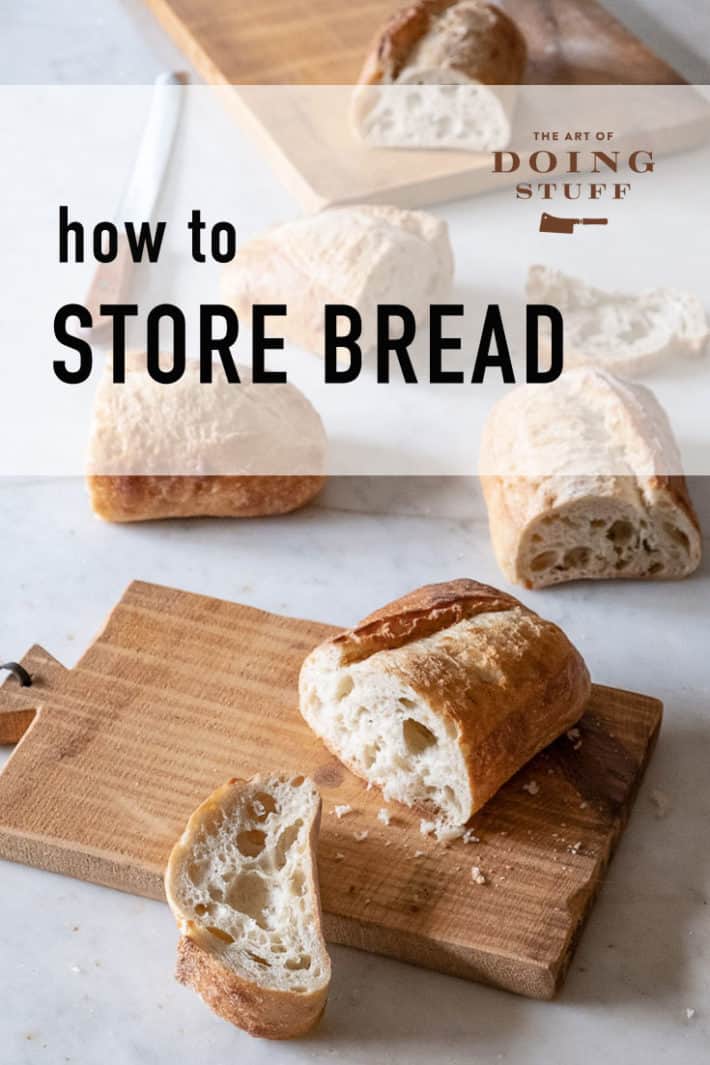



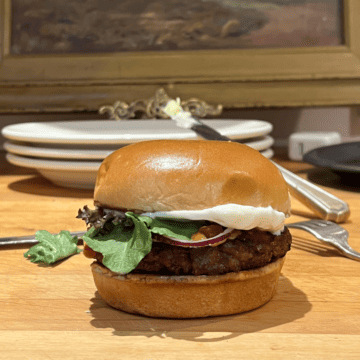
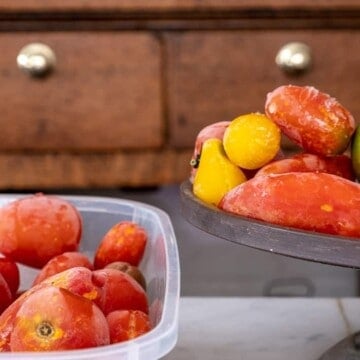
Just because you are like 12 and neither know how to bake organic bread to where it will keep or how to do many other life skills that our grandparents taught some of us, it doesnt give you the right to call people drooling morons and be a haughty little millenial, I bake bread all the time that doesnt mold in three days, and you are ridiculous stating falsely that No One Knows How to preserve bread since sliced bread came along. Try reading a book. Or doing some reasearch kiddo.
LOL! Oh Rick. ~ karen!
Look at this guy getting his panties in a twist over someone's blog post about bread.
Grow up, Rick.
Curious if you live somewhere super hot or humid? I've found that keeping bread in their bakery bags dries them out - I've been successfully storing bread in a gallon sized ziploc on our counter that I reuse (cut in half if it's a long loaf). I usually try to squeeze all of the air out between uses, but I've never had a mold problem and the crust/interior maintains it's texture, which is my main priority. However, I live in Northern California, and the air is cool and dry, so I'm wondering if that has something to do with it?
I've been wanting to do something a little more *aesthetically* appealing, so I ordered one of these glass cloche domes, hoping to leave it out on a cutting board, and ended up stumbling upon your article. Guess we'll just have to wait and see how it works out!
When we moved from the Midwest to the hot, humid, buggy Mid-South, I had to learn new storage methods for lots of foods. We bought a bread box, and it has made all the difference. Bread, English muffins, tortillas, all last forever in the bread box.
Memphis, right?! Yes, I'm going to invest in a bread box I think. ~ karen!
How do you store your bread and tortillas in the bread box? I got mine especially for homemade sourdough, but your mentioning tortillas really caught my eye! I guess you leave them in the plastic they are purchased in? I figure the homemade bread will stay uncovered in the bread box (which is arriving in a couple days!), cut side down... (I live in a hot and humid climate and the internal temperature of our home in summer is generally 77-80 degrees Fahrenheit, most commonly 79.
I use my bread box to store tea. We always forgot the bread was in there. Now we store the bread on top of the bread box or in the freezer.
YOU can make a wooden one!!! (and show us how!!!!)
I'm waiting.................
Exactly right, Lisa. I have had a simple, wooden breadbox with a drop-down front for 30 years. It keeps my homemade soughdough bread just fine for a week. I put the cut side of the bread down on the floor of the box and close the lid. Good to go. It is not air tight, but the cut side is against a surface, so it doesn't dry out. The crust stays good and the bread is good for sandwiches for four days, excellent for toast or panini otherwise.
Such a timely post for me, I just bought a bread box yesterday at the Container Store. I looked at many versions and found some cheap ones at TJMaxx, Home Goods and Bed, Bath and Beyond. The problem with those cheap ones including that one on Amazon with 2,000+ reviews is that they are very flimsy. I bit the bullet and bought a Brabantia which is at least nice looking. I would have happily bought any bread box you recommended after research and testing 'cause you are my first go to before I purchase anything.
:) Thank you for the vote of confidence! A bread box review may be a ways off so it's a good thing you got one. ~ karen!
I so wanted to glass dome method to be the winner. It looks beautiful. Thanks for this post!
Thank you for your experiment. I've been making my own bread for a while now, rarely eat store bought anymore. No taste. Freeze what you're not going to eat within a day. Store fresh in a paper bag. That is for homemade bread. Store bought 'wonderful' bread can last up to 3 months with no sign of spoilage. Imagine what it does inside you. We used to use that for squeezing into dough balls for making doll pottery or for fish bait. After all this discussion, it is pretty understandable now why bread pudding and brown betty were such classic desserts back in the day. I still remember how the bread drawer smelled at my Grandma's house. Had to push the metal lid back when you opened the drawer and all the breads were just left naked in the bin. I know of a science teacher that showed her students the reality of bread - she fed a couple mice only 'wonderful' store bread and another couple with whole wheat bread - the wonderful mice died. Seems nutrition is some kind of necessary thing.
Guess I'll add my two cents. I buy fresh baked, sliced bread, and store it in its plastic bag -- IN THE OVEN.
I rarely use the oven, and a loaf of bread stays fresh all week using this method. I guess if you cook a lot, it might be an inconvenience to remember to remove the bread before preheating the oven, and wait until it's completely cool before returning the bread, but even I have to do that occasionally, and it's no bother.
Keeping (wrapped) bread in the refrigerator is the winner, hands down
(I'm just copying and pasting my answer from a previous commenter) "Bread has 2 kinds of starches. They both harden. The first time the first starches harden is when you take it out of the oven and it cools. That's why bread firms up after allowing it to rest from the oven. The second starch hardens with time AND temperature. The cool temperature of the refrigerator causes these starches to harden immediately. A freezer cools the bread down to freezing so quickly that the starches don't have a chance to harden up before they're frozen and basically immobile. So the answer to your question is, refrigerating bread makes it as stale as it would be after leaving on the counter for a week. You lose all the good texture. Whereas keeping it in the freezer or on the counter, you don't. ~ karen!"
What happens when you store it in the refrigerator? I think it makes it last longer.
Bread has 2 kinds of starches. They both harden. The first time the first starches harden is when you take it out of the oven and it cools. That's why bread firms up after allowing it to rest from the oven. The second starch hardens with time AND temperature. The cool temperature of the refrigerator causes these starches to harden immediately. A freezer cools the bread down to freezing so quickly that the starches don't have a chance to harden up before they're frozen and basically immobile. So the answer to your question is, refrigerating bread makes it as stale as it would be after leaving on the counter for a week. You lose all the good texture. Whereas keeping it in the freezer or on the counter, you don't. ~ karen!
I've been making more of my own bread recently. I suppose I could store the bread in a plain brown paper bag. I'll give that a try. Or.......Christie's Antique show is coming up very soon. It's good to have something specific to look for. See you there....
There are two of us now at home. A month or so ago I purchased a Victoria cast iron Tortilla Press from Amazon and use a recipe for Tortillas that is a healthy bread (sugar free and no gluten). I enjoy making a double batch to last a week approximately. These prove very versatile when whipping up a quick light meal. Most often I serve the tortilla rolled up tightly around a filling of ham salad or chicken salad with fresh spinach leaves or green lettuce. I first spread the tortilla with a layer of home made mayo. Once rolled I make a nice diagonal cut through it and serve on a salad plate with a few cut up Basil leaves for decoration. I have also used half a tortilla dressed up as an open face Danish sandwich. Pizzas have also been made using this healthy no grain bread sub. Tortillas have also been left pancake style to be covered with a delicious serving of Butter Chicken or Meatball Spaghetti serving. I keep a pile of Tortillas in the fridge separated individually with plastic wrap, and all sitting in a round casserole dish. They stay perfect until used up. Welcome Diabetics and food lovers.
Would you happen to mind sharing the recipe pretty please? :)
I bake most of my own bread. Never have a problem with mold.
Of course I have LOTS of friends who look forward to a fresh loaf , and a priest who loves to use a fresh loaf for communion. So I keep one or two and share the rest.
LOVE the glass dome look ! Next dinner I'll be doing that for sure! Thanks!
I know the freezer has been mentioned several times but it seems to be mostly in reference to longer term storage. When I buy a loaf I immediately slice it and put it in the freezer. When I need bread I pull out a slice or two and pop it in the microwave for 20 seconds. Now it’s ready to eat (or more likely toast) and it’s always first day fresh. It may feel odd to put a brand new loaf directly in the freezer but if you want the good stuff always on hand for a quick sandwich or a toast, this is a great method.
I have a lot to say today. Since I never comment, maybe you will be patient with me. First, I started using a bread box again about three months ago and it hasn't let me down yet. Mine is wood with the roll top (like the old desks). I LOVE IT! Next, your sense of humor sets me up for my day! If I am down, I go to your blog and all is well with the world. I think you are the wittiest, most realistic person I have ever had the pleasure of getting to know, even if it's one sided! I live in Florida and I know you are in my beloved Canada (right?) but I would love it if you came to lunch and had sweet tea!!!! Now, go have a great day.
O.K. well if I'm ever in Florida I may take you up on that just to experience my first sweet tea. ;) ~ karen!
Hot tea is difficult to find in the "Excited States". However, in some Canadian restaurants, they don't know about "hotting the pot" before putting the tea leaves/bags in the pot and then pouring in the water, just off the boil (208℉ ).
As kids, my brother and I would use the soft, nutrient-free insides of Wonder® Bread to make snowballs to pelt each other with. ;-) Mom was not impressed and switched to healthy wheat bread.
I often make homemade bread of various types, own a bread box and have tried multiple ways to keep bread fresh including freezing. The best method that I have found is to completely wrap the unused bread in foil. Three-four days after making the bread (about as long as it lasts in my house), the texture is almost the same as fresh without mold, and I live in a very hot, humid climate.
The bread will dry out in the paper bag alone, cut bread faster than whole loaf. The plastic bag over the paper bag keeps the bread from drying out and if you leave it loosely open, it’s less likely to mold/mould and will still have a bit of a crust-crunch.
If you have kids at home, just leave fresh bread standing on the cutting board, cut side down, uncovered. The loaf is usually gone in a day or so and it’ll remain fresh and still crusty. I used to make sourdough loaves once a week and any bread that dried out was used for a French toast or went in the blender for crumbs.
I think what makes these paper bags effective is they aren't 100% paper. They have a plastic insert in them as well. ~ karen!
My 40s kitchen came with 2 tin lined bread drawers. New kitchens should bring them back.